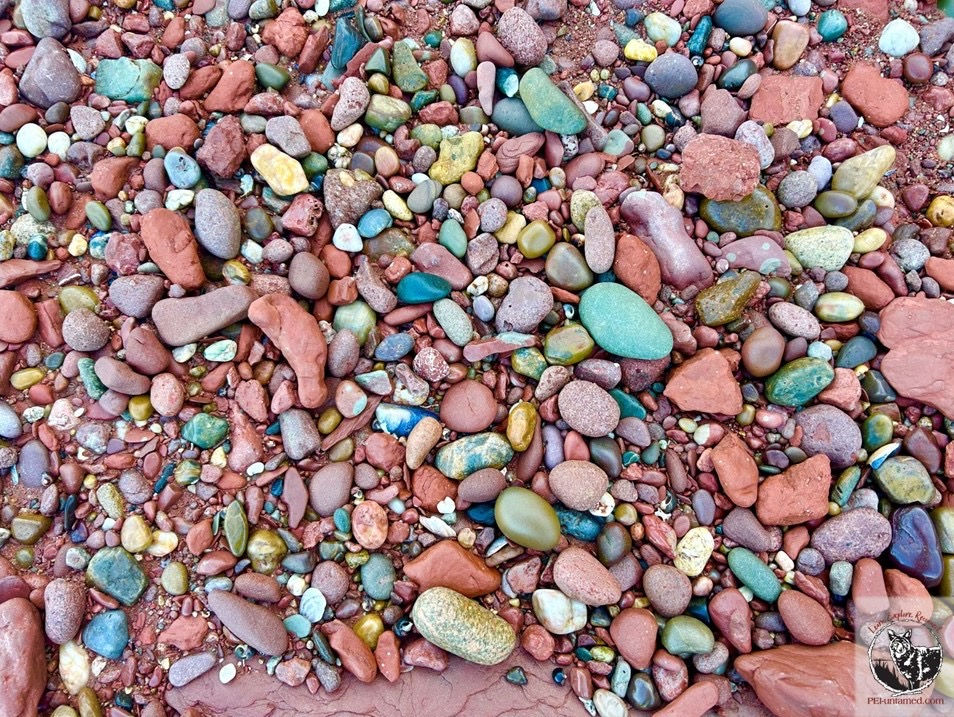The Story of PEI Part 1: Bedrock
- katemacquarrie22
- Jan 8
- 3 min read
Humans think in decades, forests operate in centuries, but the history of the land around us spans eons. This winter, we’ll look at the story PEI’s land tells about itself – our Natural History. The early chapters are written in sandstone and landforms, later ones in drowned forests and ancient pollen. It all starts about 300 million years ago, a time long before humans or even dinosaurs.
Geological time is hard for our brains to fathom. We often have a better concept of distance than time, so let’s picture a year as equaling one inch (2.5 cm). On this scale, the average Canadian lifespan amounts to less than seven feet (2.1 metres) while the age of our sandstone equates to more than 4,730 miles (7,600 km) – greater than the distance across Canada!
On this timescale, the Island we know and love hasn’t always been on the northeastern edge of a continent. During the late Carboniferous and early Permian Periods, the sediments that would become our famous red sandstone were being laid down near the equator, in the middle of the supercontinent Pangea (Photo 1).

The slow-motion collision of continents that formed Pangea created the Appalachian Mountains. Over millions of years, ancient waters slowly eroded those mountains and carried cobble, pebbles, sand, and mud across the landscape. New layers were deposited on top of older layers and eventually the sediments lithified – they turned to stone. Some of that stone is now PEI’s bedrock.
This process follows a few basic rules that help us decipher the story. First, more energy is required to move larger particles such as cobbles and pebbles than smaller grains of sand, silt, and clay. This means that fast-moving floodwaters can carry larger sediments than gentle streams. Second, sandstone is formed in progressive layers, with the oldest at the bottom and youngest at the top. Like tree rings, each layer tells us about the environment in which it was formed.

In Photo 2, you can see layers of larger particles called conglomerate interspersed between layers of finer-grained sandstone, along with a green-grey layer further above. The conglomerate records periods when torrents of floodwaters raged across the landscape, carrying a tumbled mix of cobbles, pebbles, and sediment along with them. The ‘normal’ looking sandstone records calmer periods when finer grains were deposited and dried under the equatorial sun. This pattern repeats throughout the cliff, telling the story of a monsoonal climate with alternating periods of fast-flowing floods and drier conditions.
The third helpful rule is that our sandstone is red because of the oxidation of iron (rust). Sediments that are green-grey kept their original colour because they didn’t get a chance to oxidize. This points to their deposition under standing water (which prevented the iron from contacting air) or their mixture with organic matter (which both uses up oxygen as it decays and changes some of the chemistry of the oxidation reaction). The green-grey layer in Photo 2 is unoxidized and points to a calmer, wetter period when there was likely standing water covering sediment mixed with organic debris.

The final rule is that sediments deposited by water are horizontal when formed. Finding them on an incline (Photo 3), is evidence of the immense geological forces associated with movement of the continents – strong enough to tilt the entire landscape! In some areas of PEI, you can find evidence of earthquakes that occurred much earlier, at the same time our sediments were being deposited. But in this photo, layers laid down over millions of years were all tilted at the same time and so we know this event happened much later, associated with the splitting of Pangea and birth of the Atlantic Ocean about 150 million years ago.

These are just a few of the stories our sandstone tells about prehistoric PEI’s tropical and monsoonal world. There are also fine-grained mudstone layers that tell of ancient lakes (Photo 4), ripples of lakeshores preserved in stone (Photo 5), and remnants of the plants and animals that lived here then (more on this next week).

If you’re interested in learning more about PEI’s globally significant geology and fossils, you won’t want to miss my monthly Zoom workshop on 18 February 2025 with special guest Laura MacNeil, owner of Prehistoric Island Tours. You can find all the details here: https://www.pei-untamed.com/event-details-registration/introduction-to-pei-geology-and-fossils



